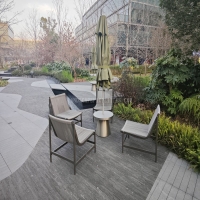Welcome to the website for landscape facilities products and knowledge.
How does the table’s design address concerns about static electricity in dry climates?
In dry climates where low humidity levels create ideal conditions for static electricity buildup, specialized table designs incorporate multiple strategies to address this pervasive issue. Modern anti-static tables utilize conductive materials throughout their construction, including carbon-infused polymers and metallic composites that naturally dissipate electrical charges. These tables feature integrated grounding mechanisms with visible connection points that safely channel static electricity away from the surface and into proper grounding systems.
The surface treatment of these tables employs specialized coatings containing microscopic conductive particles that create a continuous path for static dissipation. Unlike conventional tables, these designs often include humidity-resistant seals that prevent moisture loss from the materials themselves, maintaining a more stable electrical environment. Some advanced models incorporate active ionization systems that emit balanced positive and negative ions to neutralize static charges in the immediate vicinity.
Manufacturers also focus on edge designs and rounded corners that minimize charge accumulation points, while specialized leg levelers often contain conductive elements to maintain consistent grounding even on varied flooring surfaces. The integration of these features ensures that sensitive electronics, paperwork, and personal comfort aren't compromised by sudden static discharges. Through this multi-layered approach, contemporary table design effectively transforms what was once a persistent problem in arid environments into a managed aspect of daily workspace functionality.
Related search:

Recommendation
Metal structure rattan chair without armrests for single person, with woven seat and backrest.